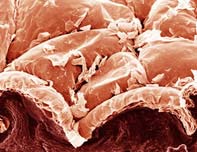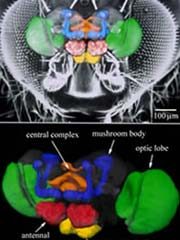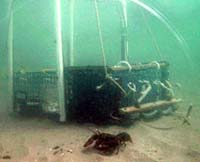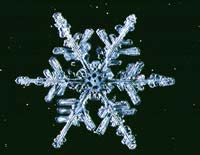Articles and reports from the Life Sciences and chemistry area deal with applied and basic research into modern biology, chemistry and human medicine.
Valuable information can be found on a range of life sciences fields including bacteriology, biochemistry, bionics, bioinformatics, biophysics, biotechnology, genetics, geobotany, human biology, marine biology, microbiology, molecular biology, cellular biology, zoology, bioinorganic chemistry, microchemistry and environmental chemistry.

The mealybug Phenacoccus herreni feeds on cassava plant sap, inducing shrivelling. It causes extensive damage in cassava growing areas in South America. However, it can be parasitized by two wasps, Acerophagus coccois and Aenasius vexans which act out a ritual to recognize and select the individuals they are going to parasitize. A wasp moves from one side to the other of a potential victim, investigating it by palpation with their antennae. Once this “drumming and turning” procedure completed, the wa

Our skin takes its oxygen straight from the air.
The James Bond movie Goldfinger spawned the urban myth that a person can suffocate if air cannot reach their skin. But the plot contains a grain of truth, new research reveals – our skin gets its oxygen from the atmosphere, not the blood.
Air supplies the top 0.25-0.4 mm of the skin with oxygen, dermatologist Markus Stücker of the Ruhr-University in Bochum, Germany, and his colleagues have found. This is almost 10 times

Average insect brain should help spot defects and their causes.
Two hair’s breadths long and five across – that’s the average capacity of a fly’s brain, German researchers have calculated. They hope to set a benchmark for crania by which oddballs can be judged.
Although it is a creature of little brain, the fruit fly ( Drosophila ) is popular with geneticists. Researchers often study flies that lack a particular gene, looking for flaws that might hint at

Underwater video reveals lobsters behaving badly.
A lobster-pot is more like a Wild West saloon than a cunningly laid snare. Lobsters show up for food and a fight, and only the unlucky few get reeled in, underwater video footage is revealing.
Camera recordings show that lobster traps catch a mere 6% of the animals that enter them. The result suggests that lobsters’ rowdy behaviour could be confusing attempts to count and size them, and so to manage the fishery 1

Ethical considerations aside, a major issue in cloning is whether or not clones are as healthy as normally conceived animals. The evidence so far has been mixed. Some cloned cows have received clean bills of health, but Dolly suffers from premature arthritis, and many cloned animals are obese. According to a report published online today by the journal Nature Genetics, mice cloned from somatic cells fare particularly poorly. Indeed, the study found that cloned mice had significantly shorter life span

New skin receptor is the tip of the iceberg.
A snowball in the face or a chilly breeze around the ankles opens a molecular trap door in our skin’s nerve cells, two studies now show 1 , 2 . A third suggests that this, the first cold sensor to be identified, is just the tip of the iceberg 3 .
How sensory neurons detect a drop in temperature is very hard to study because it affects so many cell processes.
David Julius of